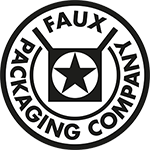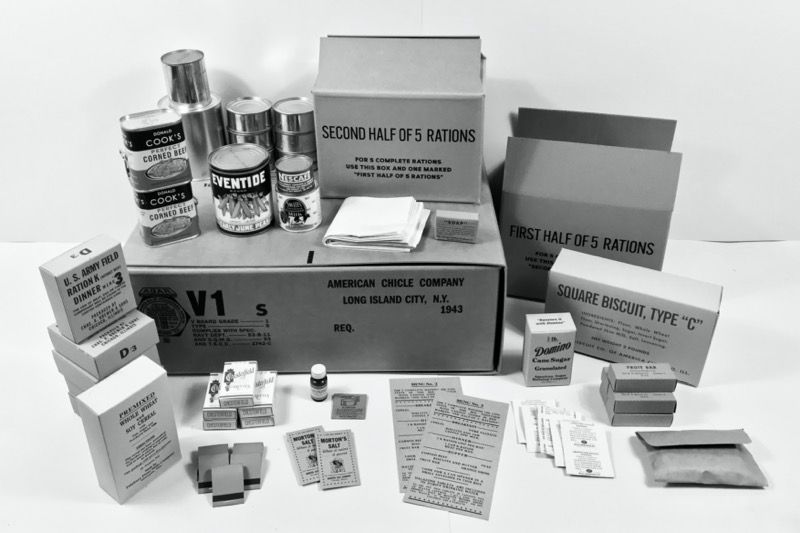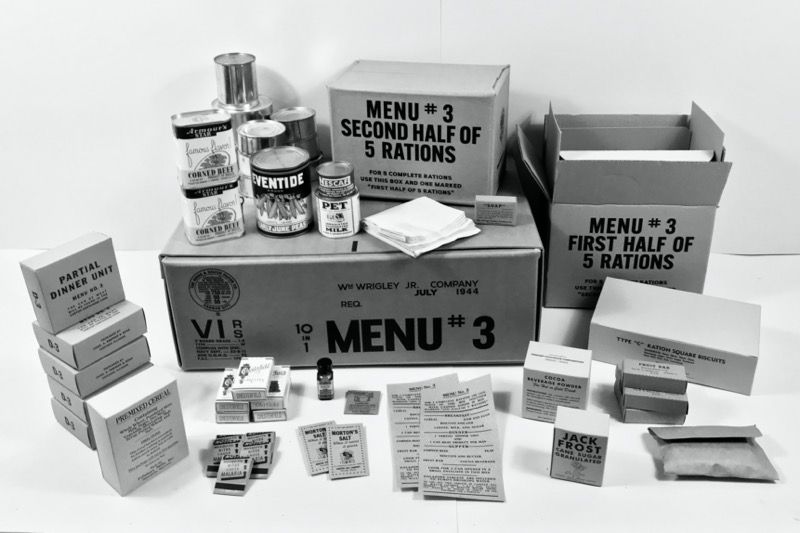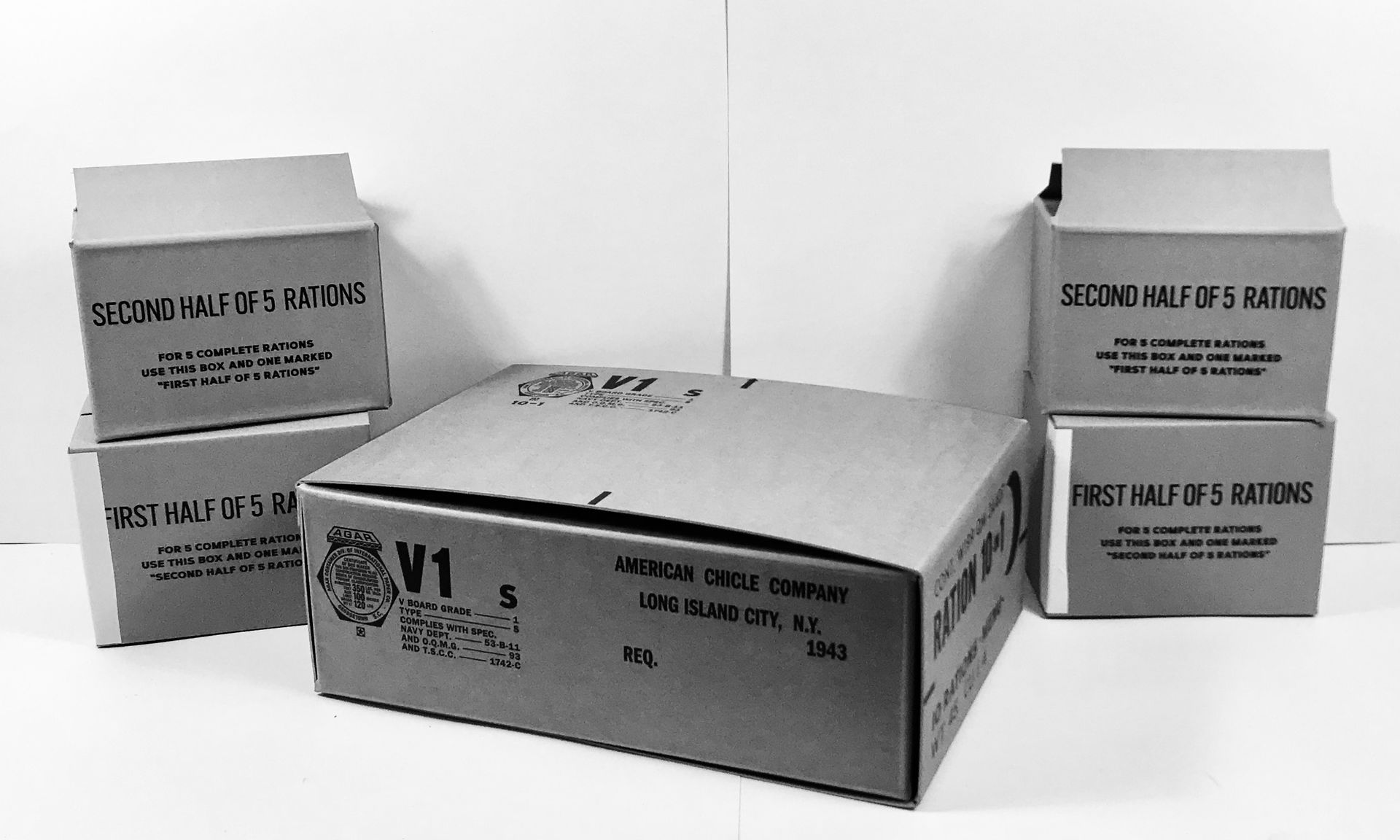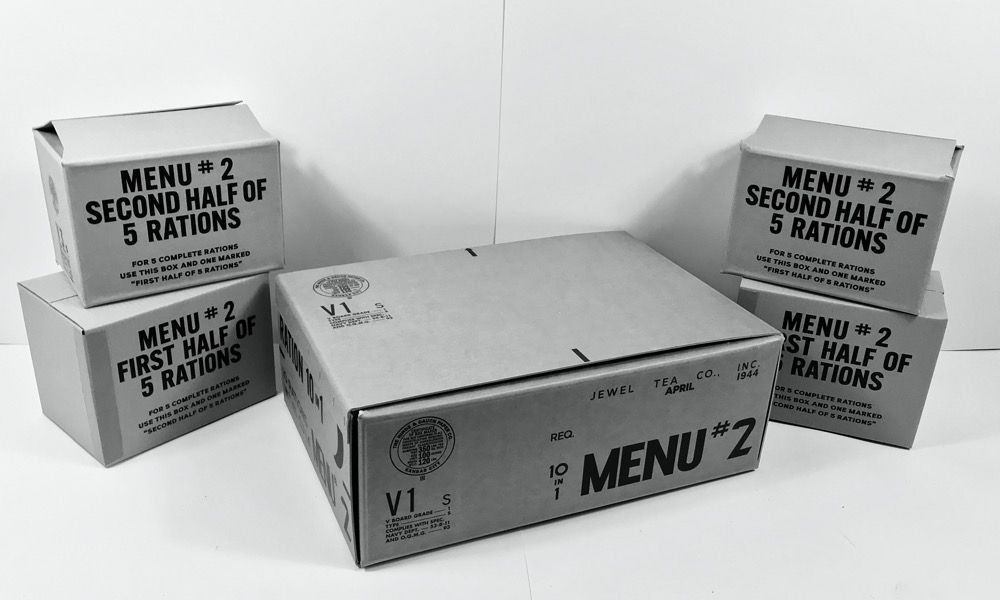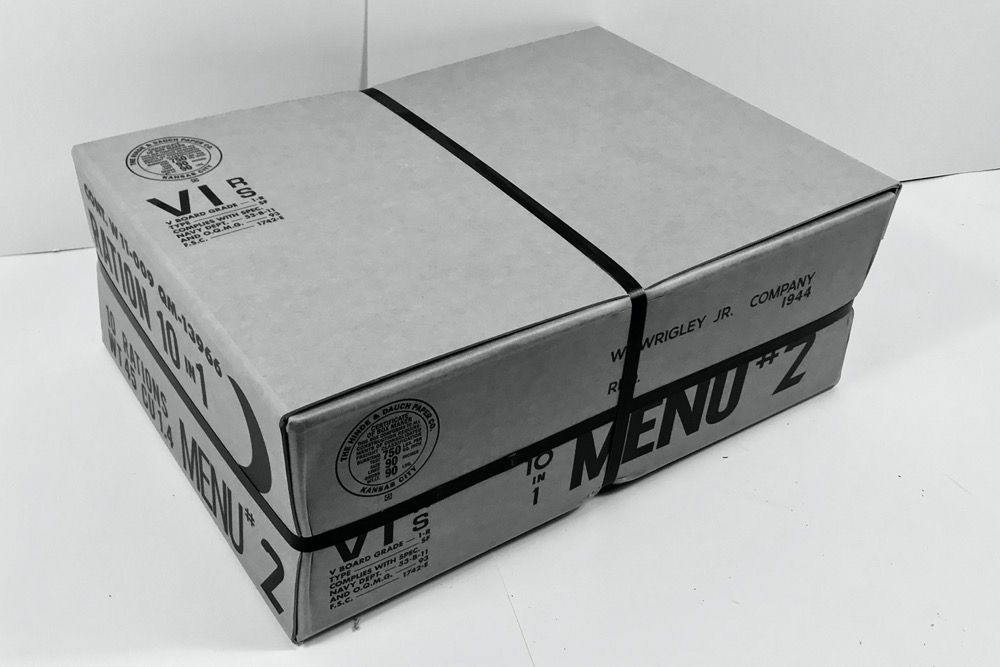10-in-1 Ration kits
Complete 10-in-1 Ration kits are €300 regardless of which type.
Separate boxes and components kits are available (See their respective pages.)
A complete kit contains one main carton + sleeve, two 1st Halves and two 2nd Half boxes with components. Included are all the necessary cartons, wrappers and extras to reproduce a 10-in-1 Ration. Just like the K Rations, all the small cartons, labels and wrappers are shipped flat. No cans are included.
Obviously, a complete kit is cheaper than buying the separate items.
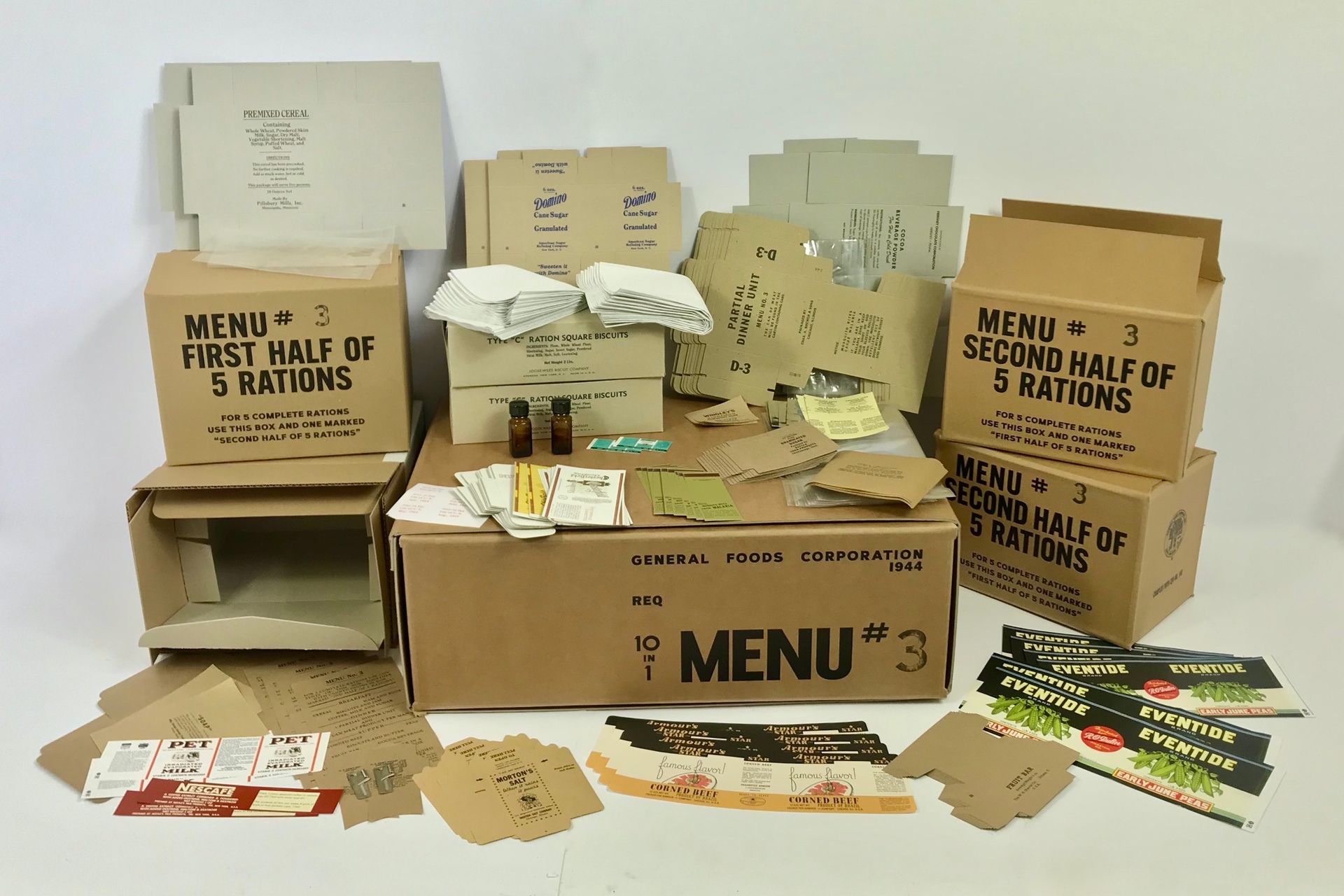
This is how you receive your 10-in-1 Ration kit. Displayed here is Menu #3 from the 2nd generation as an example. Note the two large and four smaller labels for the canned peas. Also included are cellophane bags for the cereals and cocoa beverage powder.
Below is what the components (of one 1st Half and one 2nd Half) look like when assembled.
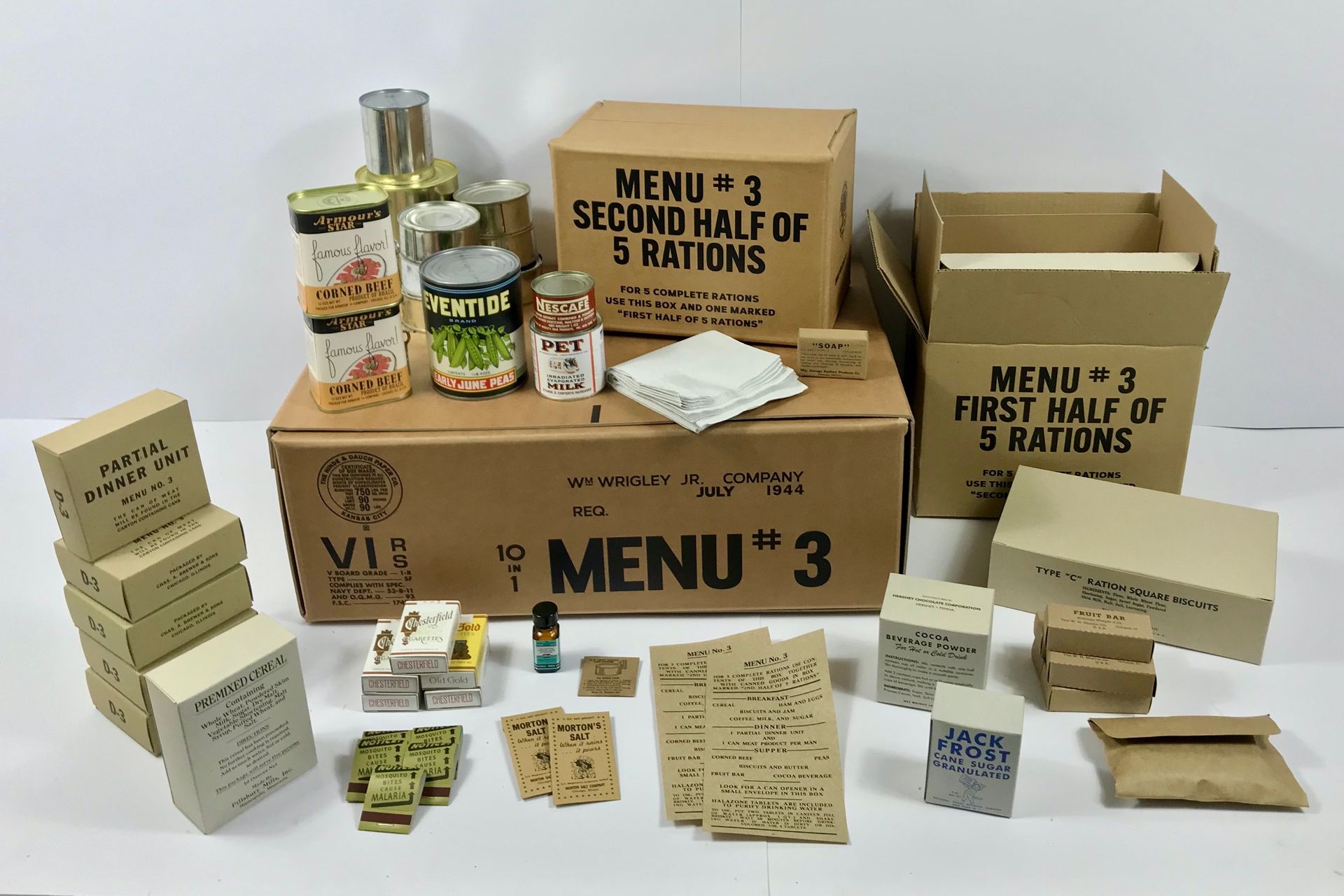
First decide which menu you want to do and from which generation, then choose the corresponding boxes from the contractor you like. When in doubt, use the contact form to ask!
Please read everything carefully to make your preferred choice of type and menu.
Although produced from August 1943 until the end of the war, there are plenty variations.
First off, there were five different menus. The composition of these menus underwent three main changes resulting in what I call the three generations. My reproductions only concern the 1st and 2nd generations.
Secondly, the design of the labels changed during the 1st generation and this results in the Type 1 boxes (without menu number) and Type 2 boxes (with menu number). There are slight variations in the label designs.
As an added bonus, the main cartons and sleeves represent all four major contractors: American Chicle Company, General Foods Corporation, Wm Wrigley Jr. Company, and Jewel Tea Company Inc.
All the soft packaging go in a solid fiberboard carton called an "Arsenal" box. After this box is sealed, it is wax coated. For mechanical protection this waxed Arsenal box is placed in a corrugated box labeled "1st Half".
All the cans, soap, and paper towels are packed in another, smaller, solid fiberboard carton labeled "2nd Half". The cans are separated with pieces of corrugated cardboard for padding (not included).
1st Generation 10-in-1 Ration
The 1st generation was produced from August 1943 until March 1944. Initially packed in the Type 1 boxes, this changed to the Type 2 boxes starting January 1944. This generation is the predominantly issued version for D-day.
Click the picture to got to 1st Generation page.
